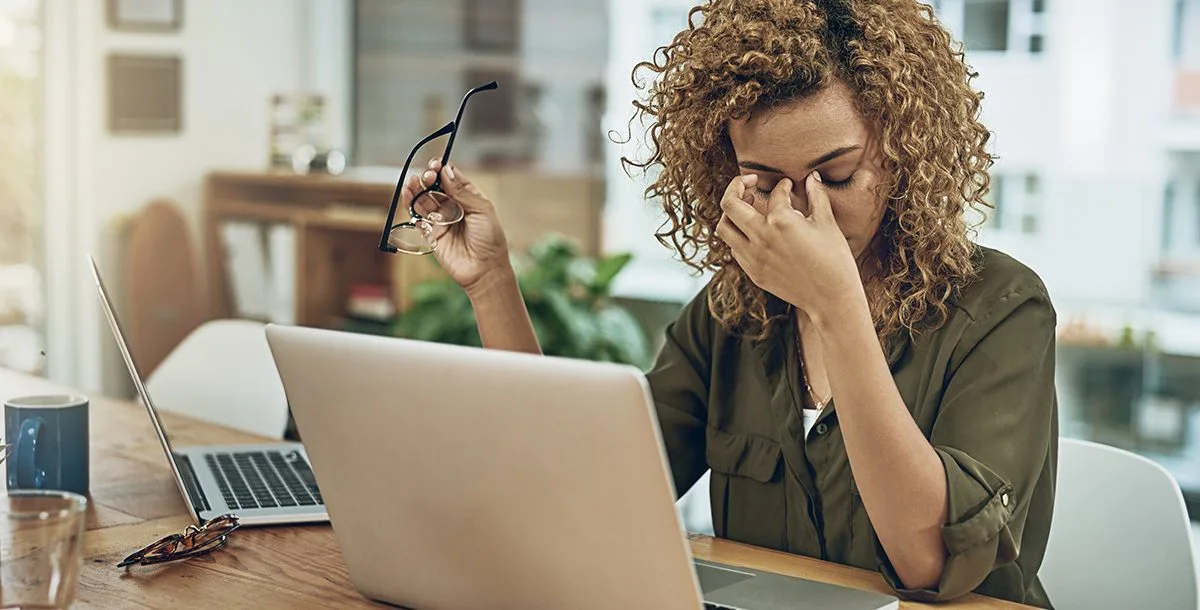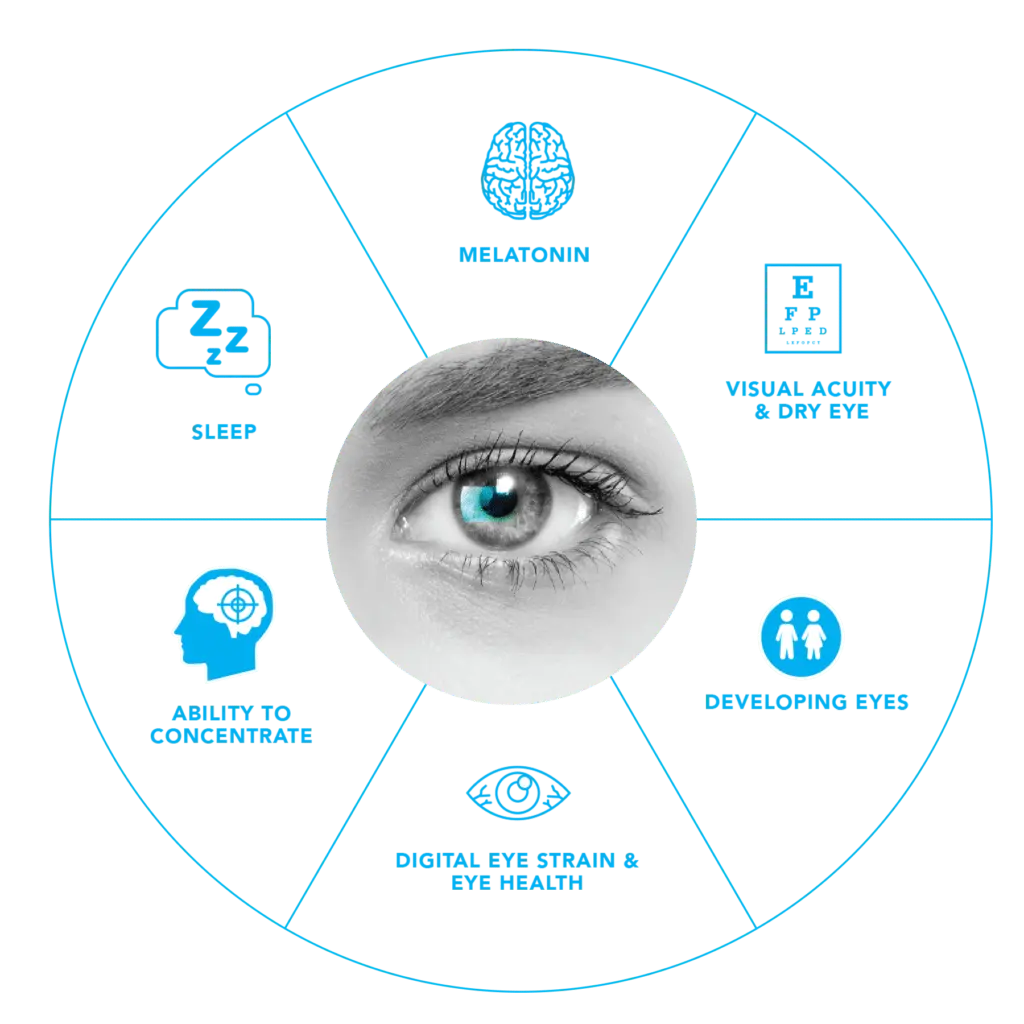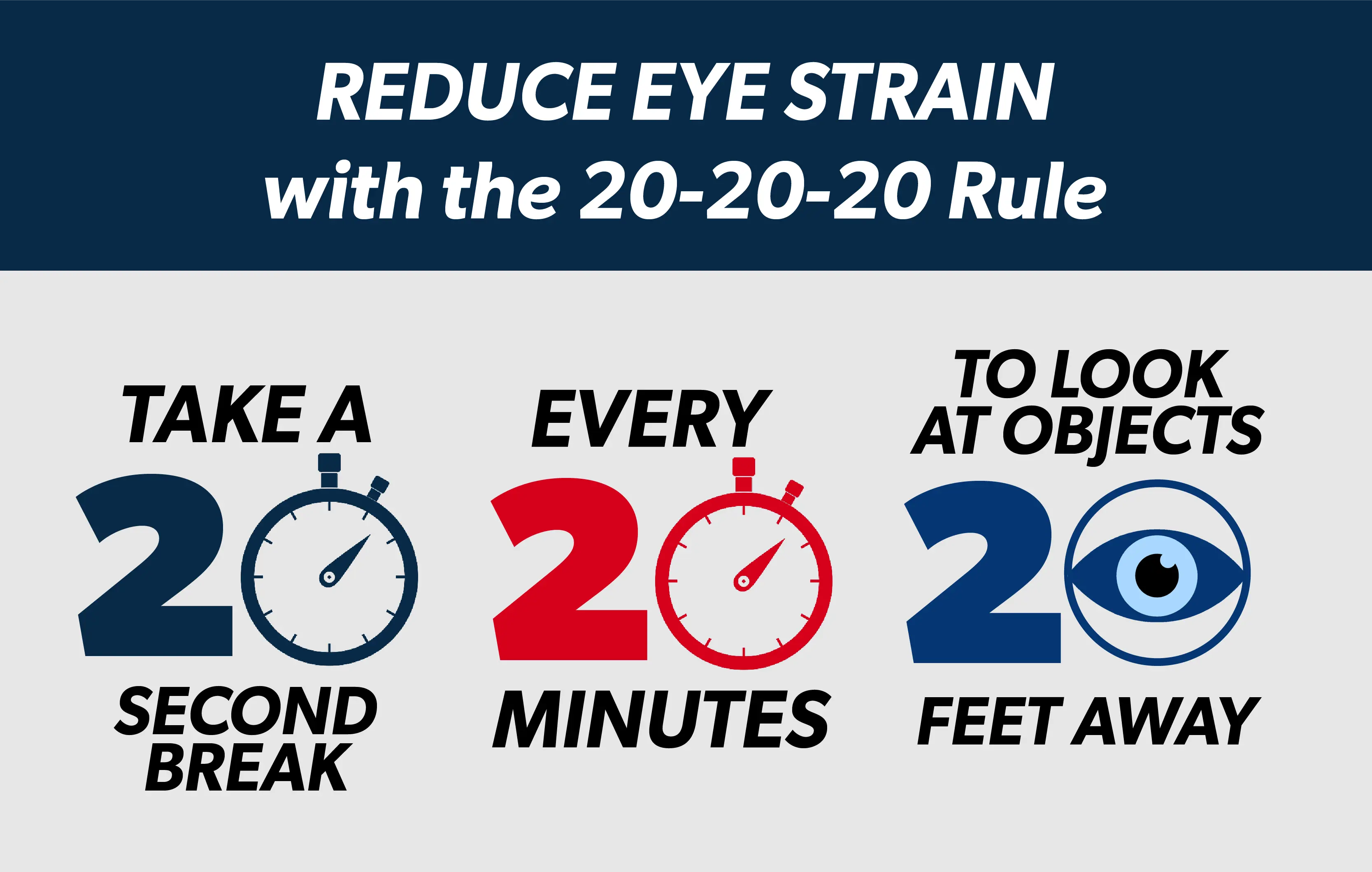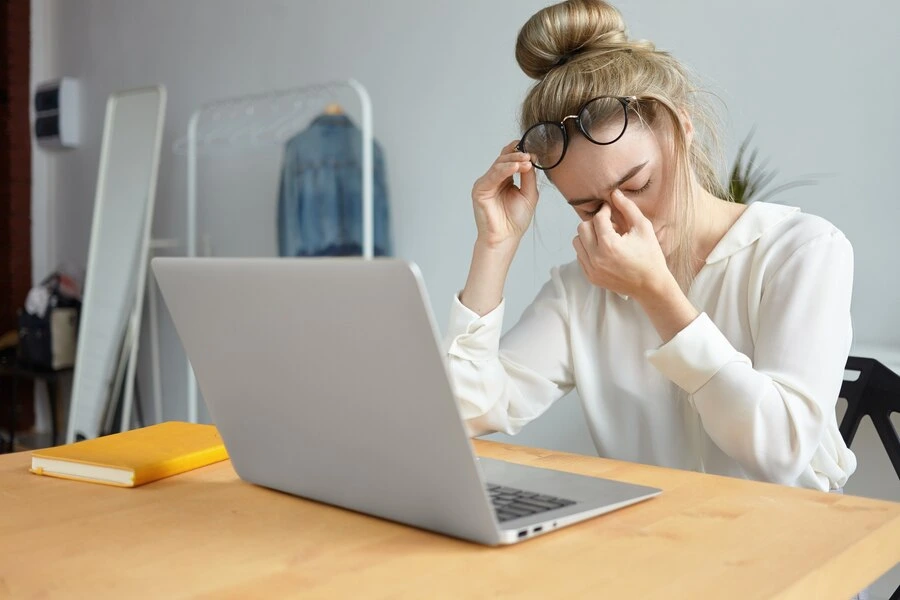What is eye strain?
While using an electronic device, we face many challenges such as eye discomfort, eye pain or strain. Many of us overlook these small issues, but did you know that spending endless hours on digital screens leads to digital eye strain?
Nowadays, you may also hear the term blue light and its impact on human beings. But what exactly is "blue light," and why should you be concerned about it? These are the questions we'll discuss in this blog post.
Eye strain, also known as asthenopia, which is a common condition that affects people, especially those who spend a lot of time focusing on close-up work like reading, using digital devices, or driving.
It occurs when your eyes become tired and overworked from intense or prolonged use.
What are symptoms of eye strain?
- Sore eyes: This is the most common symptoms and can feel like a burning or stinging sensation.
- Blurred vision: You may have difficulty focusing or seeing clearly, especially at a distance.
- Dry or watery eyes: You may feel like your eyes are dry and scratchy, or they become watery.
- Headaches: Eye strain can trigger tension headaches in some people.
- Neck and shoulder pain: Straining your eyes can also cause tension in your neck and shoulders.
- Sensitivity to light: You may find bright lights uncomfortable or even painful.

Causes of eye strain can include
Prolonged use of digital devices: This is a major culprit in today's world. Staring at screens for too long without breaks can fatigue your eyes.
Poor lighting: Working in dim or flickering light can make your eyes work harder to see, leading to strain.
Uncorrected vision problems: If you have uncorrected nearsightedness, farsightedness, or astigmatism, it can make focusing difficult and cause eye strain.
Underlying eye conditions: Dry eyes, for example, can worsen eye strain.
Poor posture: Sitting or standing for long periods with rounded shoulders can also contribute to eye strain.
Blue Light and Digital Devices
Digital devices like smartphones, computers, TVs, and tablets emit blue light as part of their display technology. While not as intense as the sun, our exposure to blue light from these devices can be significant due to:
Proximity: We often hold these devices close to our faces, increasing the intensity of blue light reaching our eyes.
Length of exposure: People spend several hours daily using digital devices, accumulating significant blue light exposure.
Cumulative effect: Blue light exposure builds up over time, potentially impacting our sleep and long-term health.

Blue light is a part of the visible light spectrum, with a shorter wavelength and higher energy compared to other colors. It's essential for regulating our circadian rhythm (sleep-wake cycle) and alertness. However, blue light exposure, particularly at night, can disrupt sleep and potentially have other health implications.
What are some tips to reduce digital eye strain?
Staring at screens all day can definitely take a toll on your eyes, but fear not! Here are some tips to reduce digital eye strain and keep your peepers happy:
Lighting
Dim it down: Avoid harsh overhead lights and opt for softer, ambient lighting. Consider dimming your screen's brightness, especially in low-light environments.
Banish glare: Position your screen to minimize glare from windows or overhead lights. Glare filters for your screen can also be helpful.
Night mode: Many devices offer a "night mode" that reduces blue light, which can be particularly tiring for your eyes at night.
Breaks
The 20-20-20 rule: Each 20 minutes, look away from digital assets for 20 seconds at something 20 ft. away. This helps your eyes relax and refocus.

Get up and move: Don't get glued to your chair! Take short breaks every hour and stand up, stretch, and walk around.
Blink it out: We often forget to blink when staring at screens, which can lead to dry eyes. Make a conscious effort to blink more often to keep your eyes lubricated.
Screen adjustments
Text size and contrast: Adjust the font size and contrast to make it easier and more comfortable to read.
Position your screen: Make sure your screen is at arm's length and slightly below eye level. Tilting the screen slightly back can also help.
Color temperature: Consider adjusting your screen's color temperature to a warmer tone, which can be less harsh on your eyes than a cooler blue tone.
Eye care
Artificial tears: If your eyes feel dry, artificial tears can help to lubricate them.
Eye exercises: Simple eye exercises like rolling your eyes or focusing on objects at different distances can help to relax and strengthen your eye muscles.
See an eye doctor: If you experience persistent eye strain or other vision problems, schedule an appointment with your eye doctor for a check-up.
Bonus tips
Improve air quality: Dry air can irritate your eyes. Use a humidifier or open a window to improve the air quality in your workspace.
Hydrate: Staying hydrated can help to keep your eyes lubricated.
Minimize screen time: While it's not always possible, try to limit your overall screen time, especially before bedtime.
To Summarize
Remember, a digital detox for your eyes is just as important as a digital detox for your mind. So, give your eyes the break they deserve, and enjoy the world in all its vibrant clarity!
And finally, let's not forget: that technology is a tool, not a tyrant. Use it wisely, responsibly, and with breaks for your eyes.
Blurry vision, headaches, dry eyes – the symptoms are all too familiar. But don't quit yourself to a life of discomfort!
Elite Eye Care best eye care clinic in New York is here to help you navigate the digital landscape with clear, healthy eyes.
Contact us for any eye-related queries!

